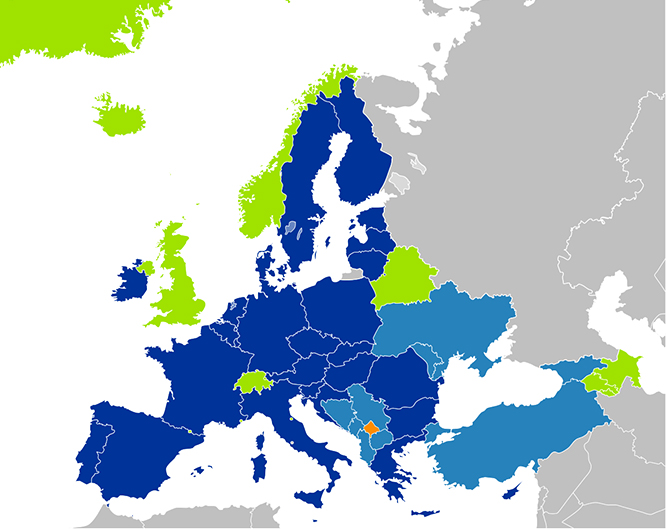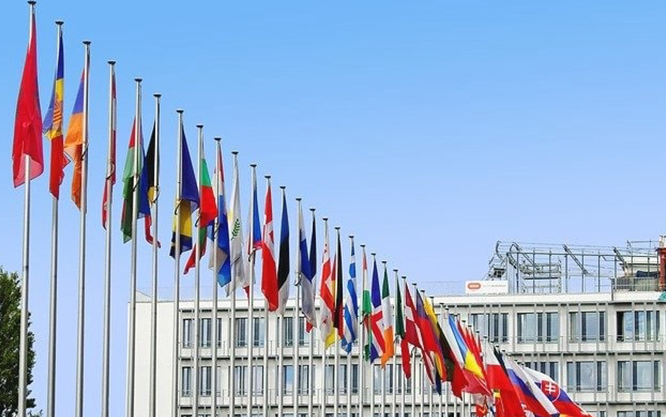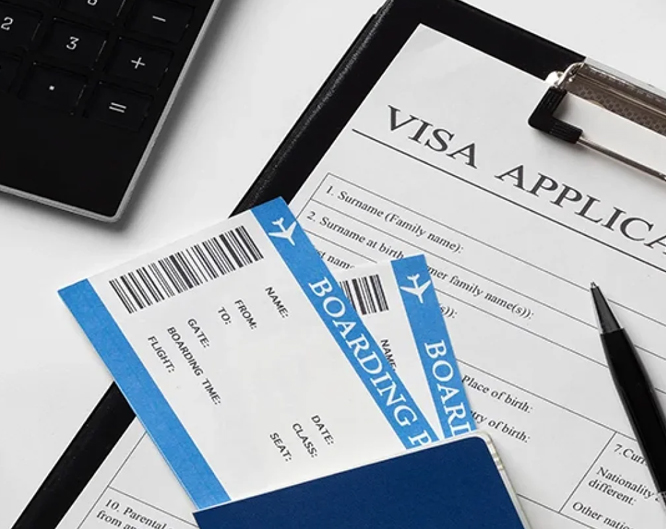Planning a Europe trip? Then your research might have shown you the term “Schengen”. If you are fortunate enough to explore the countryside of Belgium, a Schengen country, there’s a chance that you will be fond of other Schengen countries too. This is the real fondness for the Schengen countries. The Schengen region is filled with 29 gems, but it itself is a village that has a landmass of around 30 square kilometers, which is home of around 5000 people. Geographically, this is the region where the borders of Germany, Luxembourg, and France meet. And the Schengen zone is named after this. Yes! The Schengen Zone — an area of Europe (and beyond) covering over 4 million square kilometers and home to almost 420 million people. And while you are dreaming of exploring its irreplaceable beauty yourself, SCHENGEN VISA HELP has all you need to know about this vibrant zone.
Schengen area – A golden ticket to the enchanting castles, vibrant villages, European architecture, stunning beaches, and breathtaking beauty. Named after the quaint village of Schengen in Luxembourg, this beautiful region


After its inception, the Schengen area has broadened itself, boasting a total of 29 countries, including most EU countries as well as non-EU countries.
EU Members – Austria, Belgium, Czechia, Croatia, Denmark, Estonia, Finland, France, Germany, Greece, Hungary, Italy, Latvia, Lithuania, Luxembourg, Malta, Netherlands, Poland, Portugal, Romania, Slovakia, Slovenia, Spain, Sweden.
Non-EU members – Four members of the European Free Trade Association: Iceland, Liechtenstein, Norway, Switzerland.
The two EU countries not currently members of the Schengen*** Zone are Cyprus and Ireland
*We will confirm you through email when the appointment will be fixed.
A Quick History: Signed by five European nations in 1985, including France, Germany, Belgium, the Netherlands, and Luxembourg. The region was expanded in 1995 after a convention, which introduced the common visa policy. And today, the Schengen region covers around 4.5 million square kilometers, serving more than 450 million residents.
Schengen – A vibrant town in Luxembourg, which became part of world history on June 14, 1985. This is when the members of the European Economic Community (EEC) signed a treaty. These members were France, Germany, Belgium, the Netherlands, and Luxembourg.
This treaty was the famous “Schengen Agreement”. And the main intention behind this is to create a common travel area for those five members of the EEC by eliminating the border checks.

On June 19, 1990, this agreement was augmented by the Schengen Convention, which not only focused on abolishing the internal border checks but also aimed to bring a common visa policy. Then, in 1993, the EEC became the European Union, and the Schengen zone was created in 1995. Following this, many European nations opt to join this agreement.
As per the Schengen agreement, there are no internal border controls for the Schengen countries, and residents can easily move around them.

The requirement for a Schengen visa generally depends on the nationality and travel duration. This is because the Schengen zone has signed a visa-free agreement with several countries, which exempts their nationals from having a visa.
Visa-free entry: Citizens of the UK, EU, USA, Canada, Australia, and 50 more countries can stay in the Schengen region visa-free for a maximum of three months.
Schengen visa required: Nationals from India, Russia, China, and most African & Middle Eastern countries. This is because they have not signed a visa-free agreement with the Schengen region.
However, UK residents from other nationalities would require a Schengen visa in order to visit any of the Schengen countries. Fret not! APPLY NOW with SCHENGEN VISA HELP and let the visa experts schedule the appointment at the embassy
Generally, the nationals of all 27 countries in the European Union don’t need a visa to travel to any Schengen country, as long as the stay does not exceed three months in a 180-day period.
If you are a citizen of any non-EU country that is part of a visa-exempt agreement with the EU, then also you do not need a Schengen visa for a short stay (Maximum three months). The countries that come under this are Australia, Japan, Mexico, the UK, the U.S., Hong Kong, Brazil, Canada, and roughly 50 more.
NOTE: The European Commission has provided a list of those countries that have signed such an agreement. So if you’re a passport holder from one or any of those countries, all you’ll generally need to enter any of the 29 Schengen countries is your valid passport


Type A – Transit visa
This is required for UK travelers who are traveling to a non-Schengen country via a Schengen airport and have a connecting flight from there. In this, you cannot exit the airport premises.
Type C – Short-stay visa
This is a common visa required for tourism, business, or family visits. This visa permits a maximum stay of three months within a 180-day period.
Type D – Long-stay visa
Also known as a National D visa, this is required when the traveler opts to stay in a Schengen country for longer than three months. This visa is issued for higher studies, employment, family reunification, etc.
Now that you have a general idea of what’s Schengen visa is, you might have got an idea as to whether you need that Schengen visa or not. And if you do, – you are at the right place. Because helping the travelers navigate their Schengen visa is SCHENGEN VISA HELP’s expertise!
As per your purpose, you need to choose the right category of Schengen visa and apply online. Fill and submit the application form by paying the handling charges.
Once you submit the form, our experts will schedule the Schengen visa appointment at the visa centre at the earliest slot available. Along with appointment booking, we will offer guidance about the documentation required.
On the scheduled day, visit the visa centre taking your documents. Get all the required documents verified, and also register the biometric details as asked. This is necessary for further processing of the visa.
After the verification, it generally takes two weeks to process the Schengen visa from UK. Then you will get your visa & passport via courier.

Additional documents as per the travel purpose. Finding it hard to arrange? Experts of SCHENGEN VISA HELP have through knowledge about the documentation of Schengen Visa Application from UK ensuring every document is arranged properly. Consult now!

Travel Insurance for a Schengen visa is a mandatory and non-negotiable document to be carried. As per the Schengen requirements, this insurance must cover all the countries of the Schengen zone. The insurance must have a minimum coverage of €30,000, which is required to cover medical or repatriation emergencies.
Travel insurance is not just a document formality – it’s necessary. So, it is advisable to get it from an authorised provider who offers various visa-compliant plans.